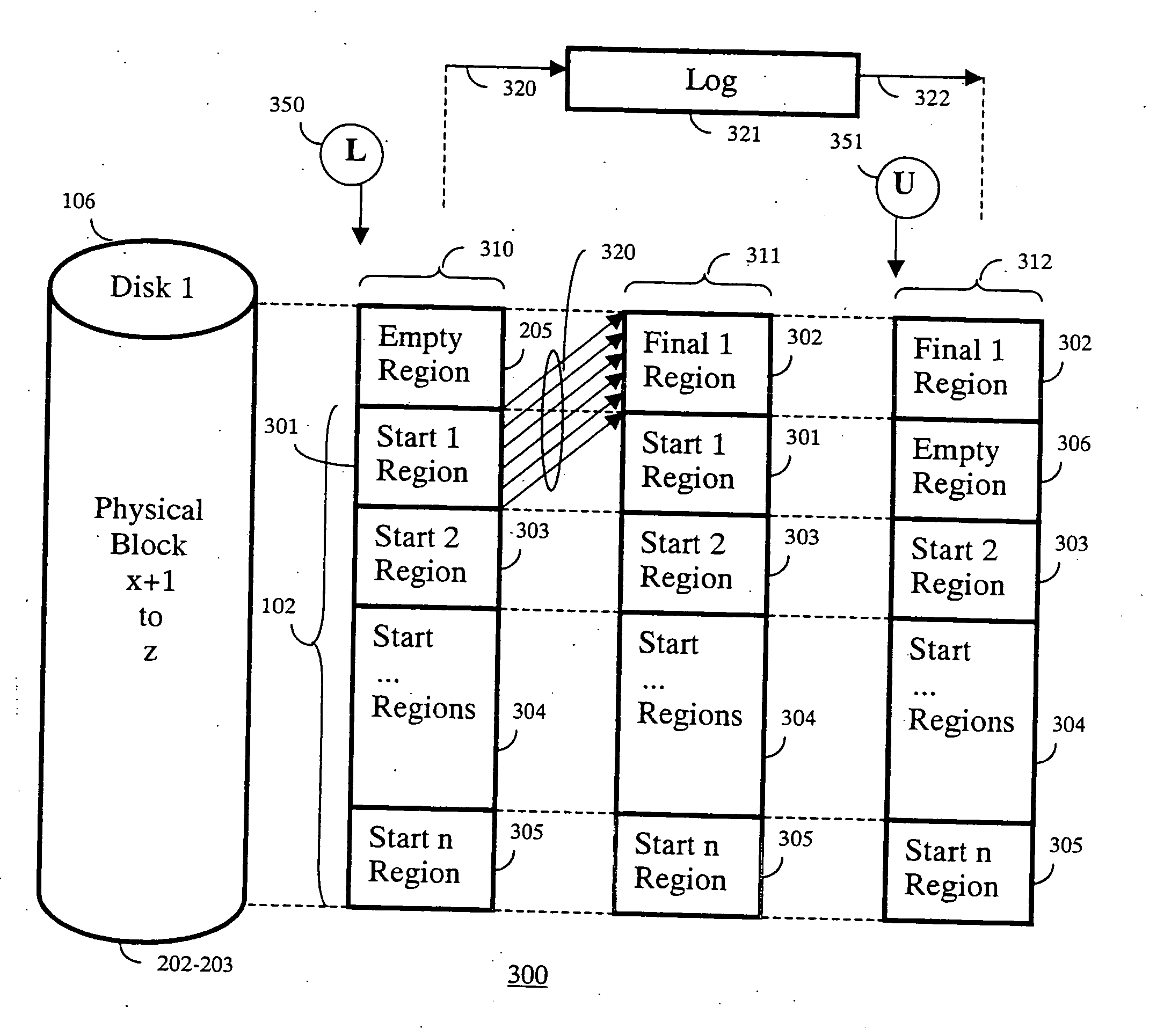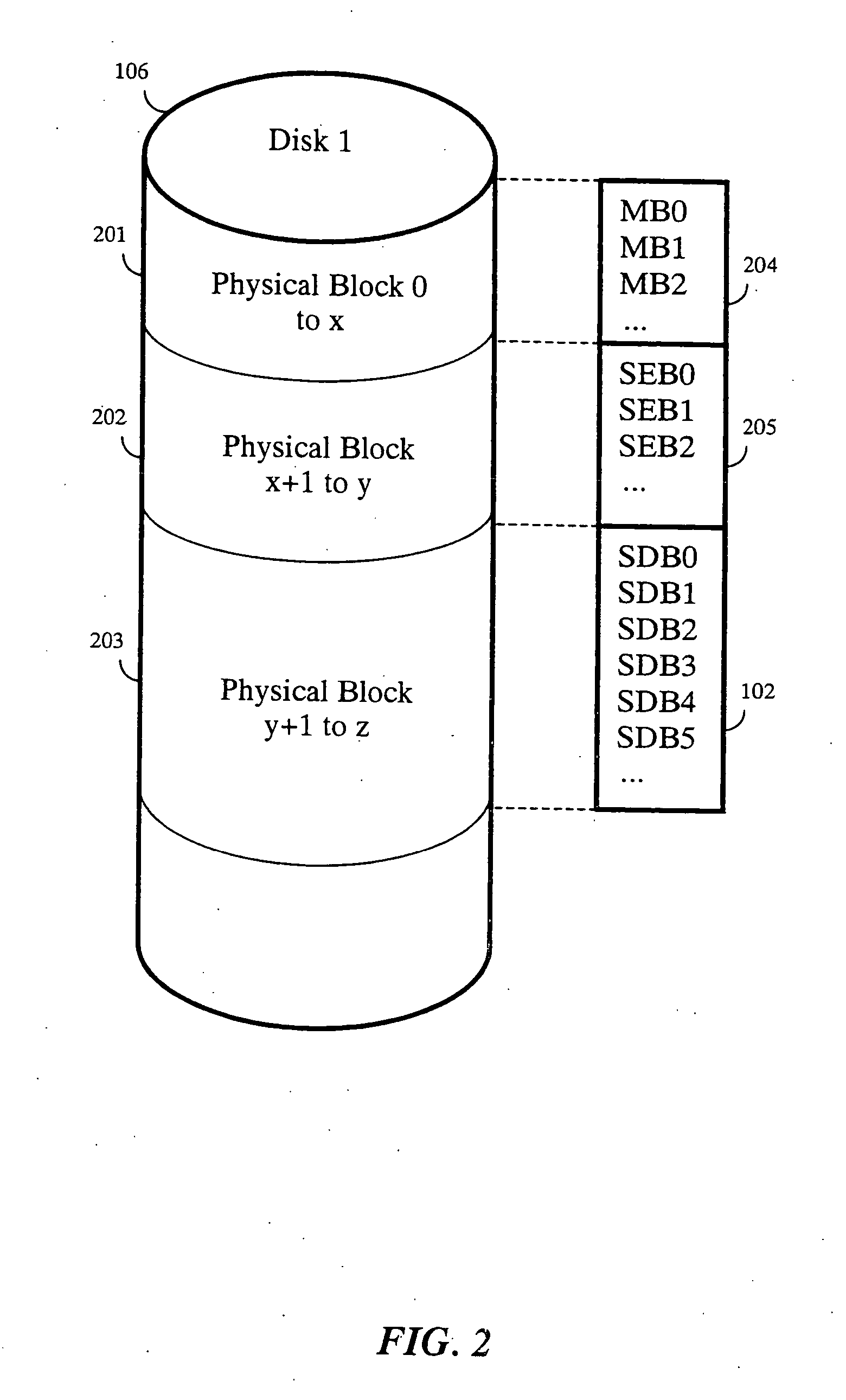In-place data transformation for fault-tolerant disk storage systems
a disk storage system and data transformation technology, applied in the field of disk storage systems, can solve the problems of increasing the cost of the system, large databases, and persistent storage of huge amounts of data on physical disks, and achieve the effects of reducing the impact of performance on users, reducing the number of times, and reducing the amount of tim
- Summary
- Abstract
- Description
- Claims
- Application Information
AI Technical Summary
Benefits of technology
Problems solved by technology
Method used
Image
Examples
Embodiment Construction
[0025] Basic Goals of In-Place Fault Tolerant Data Transformation
[0026] On-line RAID level migration transforms data from any starting RAID level (0, 1, 2, 3, 4, 5, 10, or 50) to any other RAID level (0, 1, 2, 3, 4, 5, 10, or 50) without taking the RAID system off-line. Although the present invention is described in terms of OLRM from RAID-5 set to RAID-10, it should be understood that the system and method described herein can be used to transform any type of data stored on disks.
[0027] ORLM Mapping for Multiple Disks
[0028]FIG. 1 shows the structure a set of disks 106-109 used to transform the starting RAID-5 set 101 to the final RAID-10 set 114 according to our invention. For the starting RAID set 101, the transformation uses the same starting data blocks (SDB) 102 on each of the disks 106-108.
[0029] The FIG. 1 also shows a start virtual block (SVB) and parity (SPAR) mapping 103-105. SVB0 is mapped to Disk1106, SDB0; SVB1 is mapped to Disk2107, SDB0; a parity block (SPAR), for...
PUM
 Login to View More
Login to View More Abstract
Description
Claims
Application Information
 Login to View More
Login to View More - R&D
- Intellectual Property
- Life Sciences
- Materials
- Tech Scout
- Unparalleled Data Quality
- Higher Quality Content
- 60% Fewer Hallucinations
Browse by: Latest US Patents, China's latest patents, Technical Efficacy Thesaurus, Application Domain, Technology Topic, Popular Technical Reports.
© 2025 PatSnap. All rights reserved.Legal|Privacy policy|Modern Slavery Act Transparency Statement|Sitemap|About US| Contact US: help@patsnap.com



